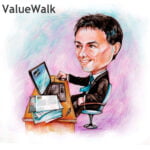Over the past 90 years, the world has changed dramatically, and so has the stock market. Investment trends and fads have come and gone, while old-world companies have collapsed, to be replaced by newer upstarts.
But the one thing that hasn’t changed over all these years is the outperformance of the size factor.
Q2 hedge fund letters, conference, scoops etc
The size factor
US small-cap stocks have outperformed their large-cap peers by 1.21% per annum since 1926 according to research from Axa Investment Managers.
The firm's research shows that between 1926 and 2017, small-cap stocks returned an average of 11.3% per annum, compared to 10.1% for large caps. That may not seem like a knock-out performance, but consider that $10,000 invested for 40 years and earning 10.1% annually would grow to $514,854. However, at 11.3%, that same $10,000 would grow to $812,007 after four decades.
Combining the size factor with the value factor is an even more potent combination. Using numbers from Kenneth French's online data repository to plot the small-cap (bottom 10% of market cap) and the small-cap plus value (high book-to-price) factor portfolios relative to the market, Axa found that small-cap value has returned 14.8% per annum on average since 1926. That's a full 4.9% per annum of outperformance over the market.
Copying other investors
The problem investors face is finding the market's best small caps. There are thousands of companies to choose from, and smaller businesses are often startups with an unproven business, less-experienced executives, and limited access to capital.
One approach, advocated by Charlie Munger, is to copy successful investors. When answering a question from the audience about stock picking at the 2012 Berkshire Hathaway annual meeting, Munger said that a great way to find ideas is by "looking at things that other smart people are buying."
He went on to add, "That is not a crazy search method as a sorting device for opportunities to consider."
A great place to start
Small and micro-cap focused hedge funds are a great place to start looking for ideas.
According to Aurum Research Limited, between 2010 and the end of 2018 smaller funds outperformed larger counterparts, returning average 7.7% per annum (for funds with $50 million or less in assets under management) compared to 5.1% for funds with more than $5 billion in assets.
One explanation for this is the fact that these smaller funds have much more flexibility as to where they can invest.
Size is a prohibiting factor for mega hedge funds because they have to be able to invest several hundred million dollars in a position to make it worthwhile. That rules out most of the small and micro-cap universe for investment. Smaller hedge funds do not have this constraint.
ValueWalk set up the Hidden Value Stocks newsletter to find these funds and discuss their small-cap ideas.
Published four times a year, the newsletter contains at least two interviews with small-cap hedge fund managers. Each interview covers the manager's process and a deep dive on two different stocks.
Over the past three years, these managers have profiled nearly 60 different stocks, which have gone on to produce an average annualized return of 27.9% with an average holding period of 319 days. This was not a backtest but rather actual returns from the time of publication.













